Indian Polity and Governance: June 2025 UPSC Current Affairs | Indian Polity for UPSC CSE PDF Download
Trust-Based Regulation

Why in News?
The Jan Vishwas (Amendment of Provisions) Act, 2023, which came into effect in August 2023, introduces significant changes by replacing criminal penalties with fines for minor violations. This reform aims to decriminalize 183 provisions across 42 Central Acts, thereby promoting ease of living and ease of doing business through a trust-based regulatory approach.
Key Takeaways
- The Jan Vishwas Act shifts from punitive to reformative legal mechanisms.
- It aims to reduce fear and harassment faced by businesses, particularly MSMEs.
- Future reforms under Jan Vishwas Bill 2.0 are expected to decriminalize over 100 more provisions.
Additional Details
- Jan Vishwas (Amendment of Provisions) Act, 2023: This legislation is a major reform aimed at promoting trust-based regulation across various sectors including environment, agriculture, and corporate affairs. For example, procedural lapses under the Environment Protection Act, 1986, now incur financial penalties instead of imprisonment.
- Trust-based Regulatory Approach: This governance model assumes that individuals and businesses will act in good faith, promoting voluntary compliance while maintaining strict penalties for serious violations.
- Need for Reform: Outdated provisions have created legal uncertainty, disproportionately impacting marginalized communities and burdening businesses with compliance fears.
- Future Steps: The Union Budget for 2025-26 proposes further decriminalization and urges states to modernize legal frameworks.
The Jan Vishwas Act represents a progressive shift towards trust-based governance, aiming to reduce regulatory burdens and enhance compliance. To fully realize its potential, effective implementation and adherence to these reforms are essential.
50 Years of Emergency in India and Lasting Lessons
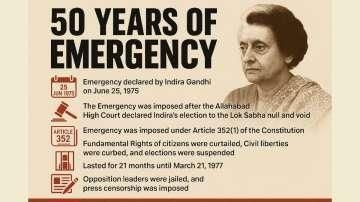
Why in News?
The imposition of Emergency in India on June 25, 1975, marks a significant event in the nation's democratic timeline, characterized by a suspension of civil liberties and suppression of dissent. This 21-month period is often viewed as one of the darkest chapters in India's democratic history, highlighting the fragility of democratic freedoms.
Key Takeaways
- Civil liberties were suspended.
- Press freedom was severely curtailed.
- Mass arrests of opposition leaders took place.
- Democratic institutions were bypassed, leading to rule by decree.
Additional Details
- Backdrop to the Emergency: Indira Gandhi's government faced numerous crises including economic strain from the India-Pakistan war, droughts, and rising corruption, which fueled public dissatisfaction.
- The Rise of Student Movements: Inspired by the Navnirman Movement in Gujarat, student protests led by Jayaprakash Narayan (JP) called for 'Sampoorna Kranti' (Total Revolution) in 1974, mobilizing widespread support against the government.
- Trigger for the Emergency: The situation escalated when the Allahabad High Court disqualified Indira Gandhi from her Lok Sabha seat on June 12, 1975, intensifying calls for her resignation.
- Emergency Rule (1975-1977): Following the declaration of Emergency, the government exercised extraordinary powers, effectively altering the federal structure and undermining state governments.
- Mass Detention: Over 1.12 lakh people were detained under harsh laws like the Maintenance of Internal Security Act (MISA) and the Defence of India Act.
- 42nd Constitutional Amendment: This amendment curtailed judicial powers, expanded parliamentary authority, and protected laws from judicial review, leading to a significant centralization of power.
- Censorship and Control: The period witnessed severe censorship of the press, with newspapers subjected to pre-censorship and dissenters silenced through arrests.
- Judicial Independence Erosion: The politicization of the judiciary resulted in a compromised legal system, where courts often sided with the state, denying citizens due process.
The Emergency era serves as a crucial reminder of the need to recognize early signs of authoritarianism and the importance of safeguarding civil liberties and democratic values. The lessons learned should be reiterated to prevent future democratic backsliding.
Advancing SC/ST Welfare in India
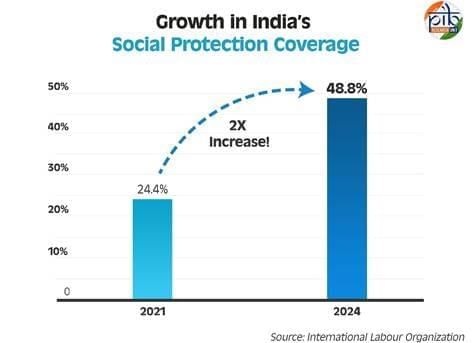
Why in News?
The Ministry of Social Justice and Empowerment convened the 28th Coordination Committee meeting, focusing on strategies to combat untouchability offences and atrocities against Scheduled Castes (SCs) and Scheduled Tribes (STs).
Key Takeaways
- Focus on implementation of existing laws like the Protection of Civil Rights (PCR) Act, 1955, and the Scheduled Castes and Scheduled Tribes (Prevention of Atrocities) Act, 1989.
- Recognition of SCs and STs within the Indian legal framework, including constitutional provisions.
Additional Details
- Scheduled Castes (SCs): Defined under Article 366, the term was first introduced in the Government of India Act, 1935. The President, after consulting the Governor, can notify SCs for each state or Union Territory (UT).
- Scheduled Tribes (STs): Tribes recognized under Article 342, with the President empowered to specify them in consultation with the Governor.
- Legal Framework:
- Protection of Civil Rights Act: Originally the Untouchability (Offences) Act, 1955, it penalizes untouchability practices.
- Scheduled Castes and Scheduled Tribes (Prevention of Atrocities) Act, 1989: Addresses crimes against SC/ST communities, establishing Special Courts for speedy trials.
- Prohibition of Employment as Manual Scavengers and Their Rehabilitation Act, 2013: Aims to eliminate manual scavenging and rehabilitate those affected.
- Scheduled Castes and Scheduled Tribes (Prevention of Atrocities) Amendment Act, 2015: Expands the definition of atrocities to include sexual offences against SC/ST women.
Challenges Faced by SCs and STs in India
- Economic Vulnerability: Disadvantaged economic position with 34% of SCs living below the poverty line compared to 9% of the general population.
- Social Prejudices: Caste-based violence prevalent in states like Uttar Pradesh and Rajasthan, with 97.7% of atrocities reported in just 13 states in 2022.
- Weak Legal Enforcement: Ineffective implementation of legal protections and educational discrimination highlighted by the Thorat Committee.
- Rejection of Traditional Roles: Rising political influence among SCs leading to tensions with dominant castes and rejection of traditional roles.
- State Complacency: Lack of Protection Cells and indifference in law enforcement hinder timely intervention.
- Systemic Failures: Poor implementation of welfare schemes such as NAMASTE and delays in funding exacerbate issues.
Measures to Enhance Welfare of SCs and STs
- Strengthening Legal & Judicial Mechanisms: Increase funding for SC/ST courts, provide specialized training for judges, and enhance police sensitivity.
- Improve Reporting & Monitoring: Implement digital complaint portals and map atrocity-prone districts for preventive measures.
- Economic Empowerment: Expedite Forest Rights Act claims, expand skill training programs, and promote financial inclusion for SC/ST businesses.
- Education & Awareness: Expand Eklavya Model Residential Schools and conduct campaigns against caste discrimination.
- Political & Administrative Accountability: Rank states on SC/ST welfare and empower the National Commission for SCs/STs for effective oversight.
In conclusion, strengthening legal mechanisms, better reporting, enhanced education, and economic empowerment are crucial to addressing caste prejudice and systemic failures. Targeted policies and robust infrastructure can uplift marginalized communities and ensure social justice and inclusive development in India's diverse society.
World Food Safety Day 2025: Theme, Activities, Significance
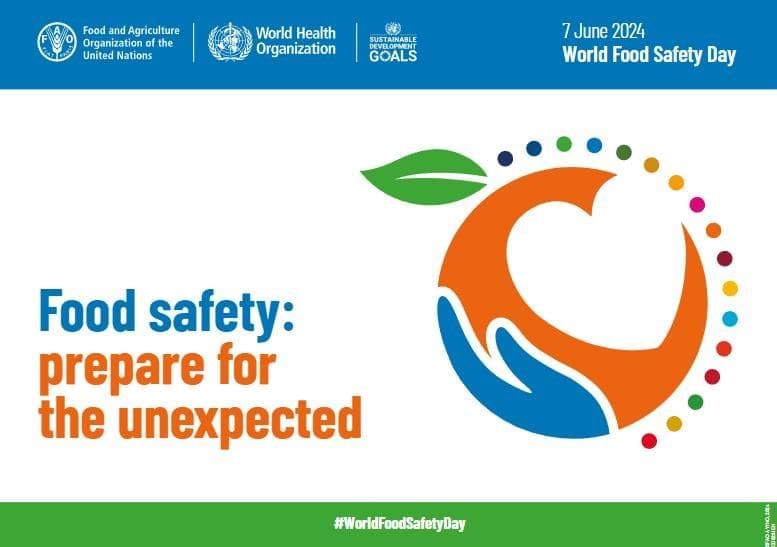
Why in News?
On June 7, 2025, World Food Safety Day will be observed globally, an initiative spearheaded by the World Health Organization (WHO) and the Food and Agriculture Organization (FAO). This observance aims to raise awareness and drive action towards ensuring food safety throughout the food supply chain.
Key Takeaways
- World Food Safety Day emphasizes the importance of safe food production and handling.
- The theme for 2025 is “Food Safety: Science in Action,” highlighting the role of science in food safety.
- Activities include webinars, awareness campaigns, and community events focused on food safety education.
- Foodborne diseases pose significant health risks, with economic costs exceeding $100 billion annually.
Additional Details
- Significance: The initiative aims to foster awareness among individuals, families, food businesses, and governments regarding the importance of food safety and the prevention of illnesses caused by contaminated food.
- Background: The observance was established following the UN General Assembly Resolution 73/250 in December 2018, highlighting the shared responsibility of all stakeholders in ensuring food safety.
- Role of Science: Science plays a critical role in developing technologies and methods to enhance food safety, including surveillance systems and risk assessments.
- Community Involvement: Various organizations will host discussions and events to emphasize the significance of food safety on this day.
World Food Safety Day serves as a vital reminder of the shared responsibility among all stakeholders in the food supply chain to ensure safe food practices. By promoting awareness and education, it aims to reduce foodborne illnesses and enhance public health globally.
NITI Aayog Calls for Cooperative Federalism
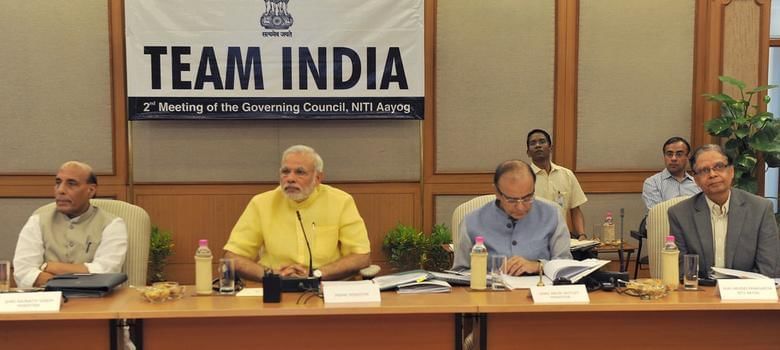
Why in News?
The 10th meeting of the Niti Aayog Governing Council was held under the theme - Viksit Rajya for Viksit Bharat@2047. This meeting emphasized the importance of fostering cooperative federalism to achieve national development objectives.
Key Takeaways
- State-Specific Demands: Tamil Nadu seeks a 50% share in central taxes (up from the current 33%) and a Clean Cauvery Mission. Punjab demands fair Yamuna water rights, financial aid, border security, and drug control.
- Emphasis on Trade & Investment: States are encouraged to reduce policy bottlenecks, repeal outdated laws, and create investor-friendly environments. NITI Aayog was tasked with preparing an ‘Investment-friendly Charter’ to attract global investments.
- Security Preparedness: The Prime Minister emphasized the need for long-term security preparedness and modernized civil defense mechanisms. Operation Sindoor, aimed at terror infrastructure in Pakistan, received unanimous support from the states/UTs present.
- Economic & Industrial Development: Chhattisgarh's Chief Minister introduced a 3T model (Technology, Transparency, Transformation) to double its GSDP in 5 years and increase per capita income tenfold. Andhra Pradesh suggested creating sub-groups for GDP growth and AI-driven governance.
- Sustainable Development & Social Reforms: There was a push for global-standard tourist spots (one per state), green energy initiatives, urban planning focus on Tier 2/3 cities, and enhancing women's workforce participation.
Additional Details
- Role of NITI Aayog in Fostering Cooperative Federalism:
- Strengthened Competitive Federalism: Promotes healthy competition among states through data-driven indexes, such as the Fiscal Health Index and the Aspirational District Programme (ADP).
- Enhanced Cooperative Federalism: Acts as a bridge between central and state governments, aligning regional priorities with national goals through initiatives like the Team India Hub.
- Governance & Policy Advisory: Focuses on policy advisory rather than just financial allocation, supporting states in establishing State Institutions of Transformation (SITs).
- Regional & Inter-Sectoral Social Interventions: Leads initiatives like the NITI Forum for the North East and Poshan Abhiyan to address disparities.
- Digital Transformation: Drives innovation through the Atal Innovation Mission and National Data and Analytics Platform (NDAP).
- Major Challenges in Advancing Cooperative Federalism:
- Lack of Federal Dialogue: Limited NITI Aayog meetings and delayed GST Council sessions lead to policy paralysis.
- Undermining Federalism: The Centre's financial leverage undermines cooperative federalism, reducing it to rhetoric.
- Unfair Tax Devolution: States demand a larger share of tax devolution due to GST's impact on fiscal autonomy.
- Inter-State Disparities: Developed states grow faster, creating migration pressures and limiting growth in poorer regions.
- Water & Border Disputes: Ongoing disputes over rivers like Cauvery and Yamuna create political tensions and affect farmers.
- Measures to Strengthen Cooperative Federalism:
- Strengthen Institutional Mechanisms: Regularize meetings and revive the Inter-State Council for ongoing dialogue.
- Fairer Resource Sharing: Advocate for increased tax devolution and introduce performance-based grants for lagging states.
- State-to-State Partnerships: Encourage mentoring and PPP investments to alleviate regional disparities.
- Enhance Inter-State Water Coordination: Implement binding river-sharing agreements and improve water management infrastructure.
- Long-Term Strategic Planning: Align state and central plans with measurable targets and periodic reviews to facilitate progress.
The 10th NITI Aayog meeting highlighted both the significance of cooperative federalism and the persistent challenges faced in India's development journey. While initiatives like state partnerships and investment reforms are promising, achieving a truly collaborative 'Team India' approach requires fairer fiscal devolution, regular dialogue, and depoliticized governance. Addressing these gaps is vital for realizing the vision of Viksit Bharat by 2047.
Goa Achieves Full Functional Literacy
Why in News?
On May 30, 2025, during the 39th Statehood Day celebrations, Goa was officially declared as fully functionally literate under the ULLAS - Nav Bharat Saaksharta Karyakram. This achievement made Goa the second Indian state to exceed the national benchmark of 95% functional literacy, in line with the National Education Policy (NEP) 2020 goal of achieving full literacy by 2030.
Key Highlights:
1. Literacy Achievement:
- Goa's internal survey indicates that the state has surpassed the Periodic Labour Force Survey (PLFS) 2023-24 figure of 93.60% to achieve full functional literacy.
- This milestone was reached through inter-departmental collaboration, mass mobilisation, and targeted outreach efforts.
2. Whole-of-Government Approach:
- Coordination among various government departments, including Panchayats, Municipal Administration, Social Welfare, Women & Child Development, and Planning & Statistics.
- Identification of non-literates and facilitating their enrolment into literacy modules.
3. Community Engagement:
- Swayampurna Mitras played a crucial role in conducting awareness drives and facilitating learner enrolments.
- Field workers and volunteers were instrumental in enabling certification and learner integration.
- The success of the campaign was largely due to the efforts of the State Council of Educational Research and Training (SCERT), local administration, and school heads.
About ULLAS - Nav Bharat Saaksharta Karyakram:
- Launched: 2022 (for the period 2022–27)
- Type: Centrally Sponsored Scheme
- Target Group: Adults aged 15 years and above, particularly non-literates outside the formal school system
- Vision: Jan-Jan Sakshar (Every Citizen Literate), in alignment with NEP 2020 and Viksit Bharat @2047
- Based on: Kartavya Bodh (sense of duty) and volunteerism
- Five Key Components:
- Foundational Literacy and Numeracy
- Critical Life Skills
- Basic Education
- Vocational Skills
- Continuing Education
Progress So Far:
- 1.77 crore learners have appeared in the Foundational Literacy and Numeracy Assessment Test (FLNAT).
- 2.40 crore learners and 41 lakh volunteer teachers have registered on the ULLAS app.
Constitutional & Policy Context:
- Article 21A: Ensures the Right to Education as a fundamental right for children aged 6 to 14 years, indirectly reinforcing the need for adult literacy as a lifelong learning requirement.
- Directive Principles (Article 45, 46): Mandate the promotion of education and literacy, particularly for weaker sections of society.
- NEP 2020: Advocates for universal literacy and lifelong learning as key objectives.
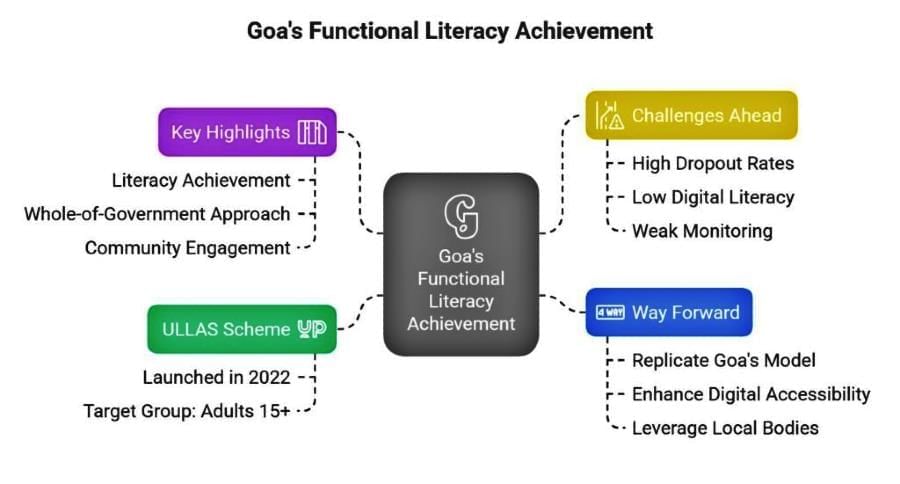
Significance of Goa's Achievement:
- Localised Approach: Goa's achievement demonstrates the effectiveness of localized, volunteer-driven, and technology-supported literacy campaigns.
- Scalable Model: The success provides a scalable model for community-led adult education initiatives in other states.
- Role of States: Reinforces the crucial role of state governments in achieving Sustainable Development Goal (SDG) 4 (Quality Education) and NEP targets.
- Inclusive Development: Promotes inclusive development, particularly for marginalized groups such as women, the elderly, and economically disadvantaged adults.
Challenges Ahead (for other states):
- High dropout rates in adult literacy programs pose a significant challenge.
- Low digital literacy in remote areas may hinder the effectiveness of technology-based platforms like the ULLAS App.
- Monitoring and evaluation of functional literacy levels are often weak or inconsistent, making it difficult to assess progress accurately.
- There is a need for incentives and training for volunteers to maintain the momentum of literacy programs.
Way Forward:
- Replicate Goa's successful model in other states, ensuring region-specific customization to address local needs.
- Ensure digital accessibility and multilingual content through the ULLAS app to reach diverse populations.
- Leverage local bodies and civil society organizations for sustainable and long-term literacy drives.
- Enhance monitoring and certification mechanisms to ensure the effectiveness of functional literacy programs.
Conclusion
Goa's achievement in functional literacy under the ULLAS scheme marks a significant milestone in India's human capital development. It highlights the success of inter-departmental collaboration, grassroots mobilization, and community participation in achieving the goals set out in the NEP 2020. As India strives for 100% literacy by 2030, Goa presents a replicable model of inclusive and integrated literacy governance that other states can emulate.
New Regulations for Ladakh's Land, Jobs, and Culture
Recently, the Central government introduced new regulations to safeguard Ladakh's land, employment, and cultural heritage. These regulations aim to address concerns raised by civil society in Ladakh over the past few years.
The President of India notified the Union Territory of Ladakh Reservation (Amendment) Regulation 2025, which includes various measures for the protection of land, jobs, and culture in Ladakh. These measures amend the Jammu and Kashmir Reservation Act, 2004, and are tailored to Ladakh's specific context.
Key Features of the New Regulations
- Domicile-Based Job Reservation: The regulations introduce a system of job reservation based on domicile, ensuring that local residents have priority in government employment.
- Recognition of Local Languages: The regulations recognize and promote local languages, reflecting the cultural diversity of Ladakh.
- Clarity in Civil Service Recruitment: The regulations provide procedural clarity in the recruitment process for civil services, ensuring transparency and fairness.
Details of the New Regulations
1. Ladakh Civil Services Decentralisation and Recruitment (Amendment) Regulation 2025:
- Introduces a domicile requirement for government posts in Ladakh.
- Defines domicile criteria, including residency and educational qualifications in Ladakh.
2. Ladakh Civil Services Domicile Certificate Rules 2025:
- Outlines the procedure for obtaining a domicile certificate.
- Tehsildars are designated as the issuing authority, with the Deputy Commissioner as the appellate authority.
3. Union Territory of Ladakh Reservation (Amendment) Regulation 2025:
- Caps total reservation for SC, ST, OBC, and other backward groups at 85%, excluding the 10% reservation for Economically Weaker Sections (EWS).
- Extends these reservations to professional institutions, such as engineering and medical colleges in Ladakh.
- Increases the quota for SC, ST, and OBC admissions in these colleges to 85%.
- Sets the total reservation for government jobs in Ladakh at 95%, one of the highest in the country.
4. Ladakh Official Languages Regulation 2025:
- Recognizes English, Hindi, Urdu, Bhoti, and Purgi as the official languages of Ladakh.
- Promotes the preservation of local languages such as Shina, Brokskat, Balti, and Ladakhi.
5. Ladakh Autonomous Hill Development Councils (Amendment) Regulation 2025:
- Amends the LAHDC Act of 1997 to reserve one-third of the seats for women in the Ladakh Autonomous Hill Development Councils of Leh and Kargil through rotation.
Differences from Existing Provisions
The 2025 regulations represent a significant departure from previous laws adapted from Jammu and Kashmir. Key differences include:
- Introduction of domicile criteria for the first time.
- Establishment of local job protections and defined reservation limits.
- Exclusion of EWS from total reservation calculations.
- Official recognition of Ladakhi languages and their importance.
Significance of the New Regulations
The new regulations are significant for several reasons:
- They represent the first comprehensive effort by the Central government to tailor governance and administrative frameworks specifically for Ladakh since its separation from Jammu and Kashmir in 2019.
- By establishing domicile criteria and a legal framework for recruitment, the regulations address long-standing demands for local job reservations, which have been central to protest movements in the region.
- The recognition of local languages, including Bhoti and Purgi, and the promotion of minority dialects like Ladakhi and Balti reflect an understanding of the cultural importance of these languages and their role in shaping local identity.
Key Demands in Ladakh
The sustained efforts of the Ladakhi people, particularly in Kargil and Leh, led to the formation of a high-powered committee by the government in 2023 to address their demands. These demands include:
- Full Statehood for Ladakh: To provide greater autonomy and governance to the region.
- Creation of a Legislative Assembly: To enable representative governance, as Ladakh currently remains under direct central rule.
- Inclusion under the Sixth Schedule: This would grant legislative and financial autonomy to tribal-majority areas through autonomous district councils.
- A second seat in the Lok Sabha and the establishment of a public service commission: To enhance representation and local governance.
These demands have been jointly put forward by the Leh Apex Body (LAB) and the Kargil Democratic Alliance (KDA).
Limitations of the New Regulations for Ladakh
Despite the introduction of these regulations, they fall short of meeting the comprehensive demands raised by civil society organizations in Ladakh. The limitations include:
- No Constitutional Guarantee: The regulations are executive orders under Article 240 and lack the constitutional safeguards provided by the Sixth Schedule, making them subject to alteration or revocation by the Centre.
- No Land Ownership Safeguards: There are no restrictions on land ownership by outsiders, raising concerns about ecological and demographic impacts.
- No Legislative Autonomy: The absence of a local assembly or autonomous council with law-making powers, as provided under the Sixth Schedule, limits local governance.
- Symbolic Cultural Protection: While local languages are recognized, there is no clear plan for their official or educational use, undermining cultural preservation efforts.
- Short Domicile Period: The 15-year domicile requirement is considered inadequate by local communities, who advocate for a longer period of 30 years.
- Lack of Environmental Safeguards: There is no legal framework to address environmental concerns related to climate-sensitive development in the region.
- No Representative Politics: The demand for a legislative assembly remains unfulfilled, leaving Ladakh without elected representatives to make laws and govern.
Strategic Importance of Ladakh
Ladakh holds a crucial strategic position at the convergence of India, Pakistan, and China, all of which have ongoing border disputes with India. Recent events have shown that both Pakistan and China often coordinate their actions regarding border issues. Therefore, it is essential for India to be attentive to the sentiments and concerns of the Ladakhi region, ensuring that local voices are heard and respected in the governance process.
|
142 videos|779 docs|202 tests
|
FAQs on Indian Polity and Governance: June 2025 UPSC Current Affairs - Indian Polity for UPSC CSE
| 1. What is Trust-Based Regulation and how does it apply to governance in India? |  |
| 2. What lessons can be learned from the 50 years of emergency in India? |  |
| 3. How has welfare for SC/ST communities advanced in India? |  |
| 4. What is the significance of World Food Safety Day and what activities are typically organized? |  |
| 5. What is the concept of cooperative federalism as called for by NITI Aayog? |  |

















